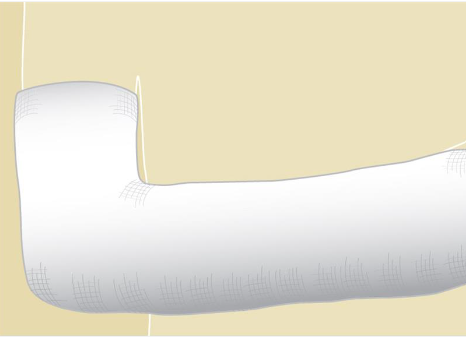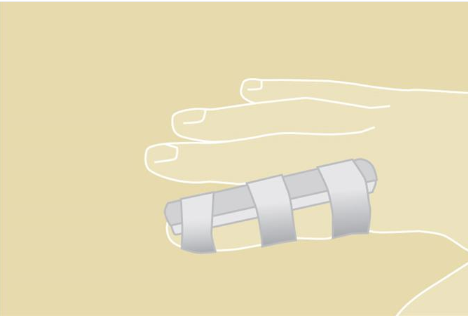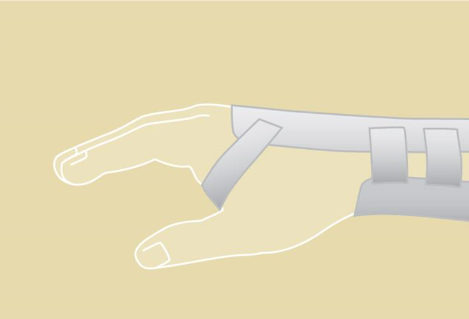A hand or upper extremity fracture occurs when a break or crack in the bone occurs in either the hand, wrist, fingers, forearm, elbow and upper arm. Each injury is thoroughly evaluated for its optimal treatment and functional impact.
Are there different types of fractures?
Bone fractures are classified into different types based on the location of the break, force of the njury, pattern of the fracture, and its exposure. These types include:
- Transverse fracture: This type of fractures occurs as a straight, horizontal line going across the bone shaft.
- Oblique fracture: In this type of fracture, the break is an angled line across the shaft of the bone.
- Comminuted fracture: This is a severe type of fracture where the bone breaks into three or more pieces.
- Spiral fracture: This fracture is caused by twisting. The fracture line will encircle the bone.
- Open fracture: Also known as a compound fracture, this break causes serious damage to the surrounding soft tissue. Bone fragments protrude out through the skin to the external air.
- Stress fracture: Also referred to as a hairline fracture, this break appears as small thin cracks in the bone and occurs due to overuse and/or wear and tear.
What types of conditions does Sonoma County Orthopedics & Podiatric Specialists treat?
Please click on the links below to learn more.
Types of Treatment
Arm Cast And Splint Care
Splints and casts are supports that are used to protect injured bones and soft tissues. An arm cast completely encircles the limb with a hard, rigid outer shell (Figures 1 and 2). A splint provides rigid support along just a portion of the limb, with soft or open areas in between (Figures 3 and 4). Splints are often used in the immediate post-surgery or injury phase. This is because a splint can better allow for the swelling that often occurs in these situations. Your doctor will decide which type of support is most appropriate for you and your arm condition.
Arm Cast Materials
An arm cast is made with plaster or “fiberglass” to form the hard, supportive outer layer. Fiberglass is lighter, more durable, and “breathes” better than plaster. Some fiberglass casts are also waterproof, depending on the underlying padding material (ask your doctor if such a cast is appropriate and available for your treatment). Plaster is less expensive and shapes better than fiberglass. Both materials have their place in treating arm injuries and protecting the arm after surgery. Also, both materials are dipped in water to start the setting process. Most casts also have a soft lining of cotton or similar material for padding underneath the hard material. X-rays can be taken through casts, but casts do block some of the x-ray detail.
A splint can be made with these same materials or with plastic, fabric, or padded aluminum. They can be custom-made, or they may be pre-made. They come in a variety of shapes and sizes, depending on the specific need. They often have Velcro straps or similar closure systems, and this makes them easier to take on and off.

Short arm cast, below elbow

Long arm cast, above elbow

Finger splint

Wrist splint
How to take care of your arm cast or splint
Keep your cast or splint clean and dry unless it is made to be waterproof. Being in contact with damp padding can irritate your skin. Plaster gets softer and weaker when it gets wet. Here’s how to keep it dry:
- Use plastic bags or a waterproof cast cover to keep your splint or cast dry when bathing. Seal the bag with tape or rubber bands so there is a water-tight seal.
- Elevate your hand in the shower above your head to avoid water running under the seal and into your cast.
- Remove the bag or cover afterward. Do not keep it constantly covered because moisture may build up from normal sweating.
Follow these additional rules when wearing an arm cast or splint:
- Do not let dirt, sand, or other materials get inside of your splint or cast.
- If you feel itching, do not place anything inside your cast because you can injure your skin; ask your doctor for advice.
- Never trim the cast or splint by yourself. If there are rough edges or if your skin gets irritated around the edges of the cast, notify your doctor, who has the proper tools to fix it.
If your cast or splint develops cracks or soft spots, contact your doctor to see if it needs to be repaired or changed.
How to take care of a waterproof cast
Waterproof casts can be submerged in water, although it is best to avoid water from lakes, rivers and oceans because your skin can become irritated if dirt or sand gets inside the cast.
Follow these additional rules to take care of your waterproof cast:
- When you come in contact with chlorinated water or dirty water, rinse the cast with fresh water when done.
- Allow the inside of the cast to drain as much as possible after it gets wet. If you have a cast that goes past your elbow, be sure to drain the area around the elbow well. The rest of the water will evaporate.
- Consider rinsing the cast with clean water after excessive sweating (although sweat will not harm the cast liner).
CAST REMOVAL
Never try to remove a cast yourself; you may cut your skin or prevent proper healing of your injury. A cast should be removed only by a professional with the proper tools and training. Casts are removed with a special type of saw that will not cut your skin.
Remember, a cast is there to protect you while your injury heals. It is only a temporary inconvenience, with the goal of helping you recover.
To book an appointment, use or online scheduling tool or call our office at 707-273-3410.



